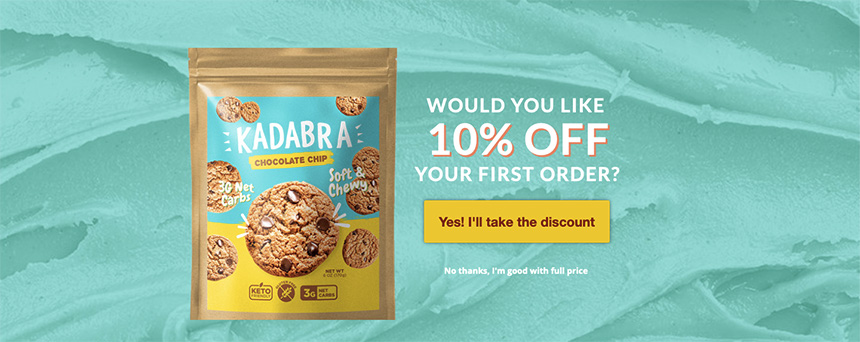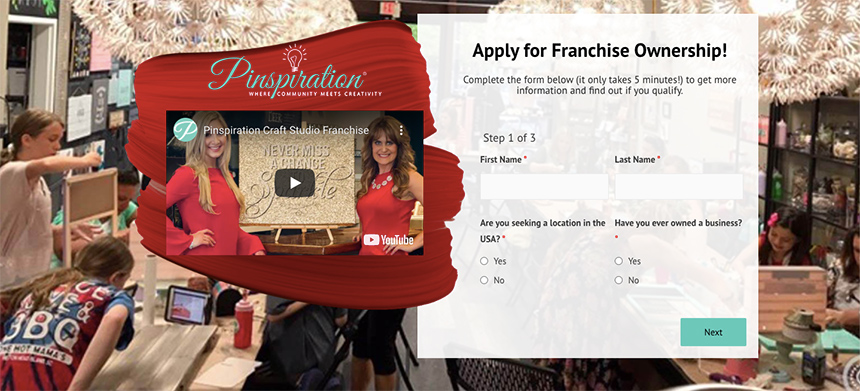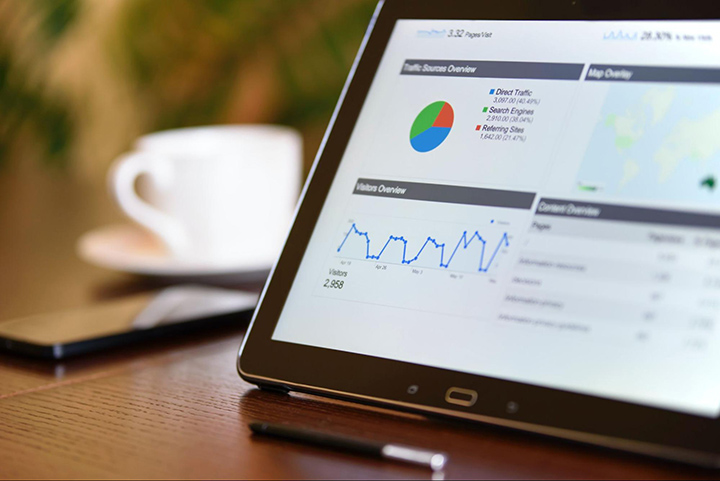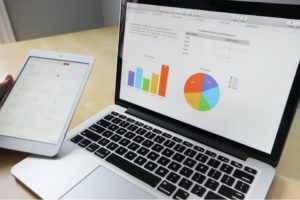
If you are getting web traffic but conversions just aren’t keeping up, consider optimizing your landing page. Landing pages are a crucial tool for generating conversions from ads and link clicks for your eCommerce business. Often, landing pages are your brand’s first impression on new consumers, so give them the attention and consideration they deserve! Web development is one of our specialties at the Right Left agency, so we are sharing some of the lessons we have learned by developing high-impact landing pages for our clients!
2. Have a Focused Goal for Each Landing page

Landing pages are effective because they are built for a focused goal to turn an ad click into a conversion. With this in mind, your landing page shouldn’t be one size fits all! Instead of directing customers to a page on your website, we recommend implementing “post-click” landing pages that provide the user with exactly what they were looking for… and nothing more!
For example, if you are selling health food that is gluten free, vegan, and keto, you should have 3 separate landing pages for the same product. When a gluten-free person clicks an ad about how the product is gluten-free, the landing page should also highlight that as the main value proposition. Here is an example of a client’s keto-focused landing page.
Focus Builds Trust – Customers crave transparency and are very adverse to perceived false advertising. Even if your appeal is essentially the same from ad to landing page, if the messaging doesn’t match, this can create red flags in the consumer and confuse them. If your ad offers a “20% discount for new members”, then this should be the main headline of your landing page. If your ad’s call to action is “Free Quote,” mirror this on your landing page. Your goal is to make their decision as easy as possible. They have already shown interest, so make the next steps in the funnel obvious at a glance and give them exactly what they expect.
Have Fun With Tailored Experiences – The beauty of a landing page is that it is only readily available to a particular target audience. This offers an excellent opportunity to get super specific with your offering and marketing message. Each landing page should be tailored to the specific marketing message of your ads, but consider going deeper by making different landing pages for the various industries you interact with or for different consumer segments.
2. Use a Simplified Design

Landing pages are more than re-worked web pages; they are a distinct experience for your customers. Your website is designed visually and functionally to meet a multitude of unpredictable customer needs. Landing pages are created with a simple goal in mind, so keep your consumers focused by offering them a straightforward and visually pleasing experience that directs their attention exactly where you want it. Here is an example of a landing page that converts very well for our client, Pinspiration.
Ditch the navigation bar – Websites are designed to offer a large amount of information to meet many different needs of the consumer. Your website has navigation and search bars for this reason. The magic of the landing page is that you already know why the customer clicked the link, so now you have to keep them interested. The Paradox of Choice states that while people like options, more options make decision-making more complicated and take longer. By offering a clean visual experience and eliminating clutter and buttons, you can easily guide customers down the funnel without distractions.
Put detailed information “below the fold”- When a customer clicks your link, the first and only things they should see should be relevant to your call to action. In the olden days of newspapers, journalists and design teams were very careful to put the juiciest information “above the fold,” so people saw it first when purchasing a paper. Now, “above the fold” means visible without scrolling. Detailed information needs to be available for consumers who want it, so put this information below the “digital fold” where it won’t distract those who are ready to purchase right away.
Pre-click and Post-click harmony – Landing pages need to seamlessly transition the consumer from seeing a marketing message to engaging with it and generating a conversion. Not only must your call-to-actions and headlines match, but your landing page must also feel the same visually. If your brand is launching a new campaign, make sure that colors, fonts, and imagery match to create an experience that flows seamlessly from ad to landing page to conversion.
3. Track Success For Informed Decisions

With all things digital marketing, a strategy is only as good as the results it yields, so tracking is critical. By using tools like google’s URL Builder and implementing A/B testing, your brand can confidently make informed decisions and quickly recognize when a landing page isn’t converting.
Google Analytics – Google offers a free Campaign URL Builder tool, which allows users to make their URLs trackable, quickly. This tool makes it easy to compare the success of landing pages based on ad placement, campaign, and even paid search terms for PPC marketing. Google Analytics may be a challenging tool to learn, but it is incredibly rewarding. Once you implement UTM parameters in your URLs, you can view traffic by campaign, source, and medium in Analytics.
A/B testing – Creating a high-converting landing page is an art and a science. With all things business, you have to trust the numbers and let the data inform decision-making. Get experimental by changing critical elements of your landing page and comparing their success with A/B testing. Even a simple change in call-to-action vocabulary, headline, promotion, or imagery can reveal opportunities for your landing pages. As said previously, post-click landing pages are hidden on your web page, so don’t be afraid of making many different landing pages to achieve your experimental goals. But be aware that two many landing pages being tested can dilute the data being collected.
4. Know When to Ask for Help
Web development exists at the intersection of psychology, graphic design, and data science. As an eCommerce business, your website is your identity, so don’t leave anything to chance! At Right Left Agency, we have extensive experience in improving client web pages, creating high converting landing pages, and building web pages from the ground up. If you’re interested in executing any of the ideas we highlighted above, let us know, and we would be happy to talk about your digital marketing strategy.


